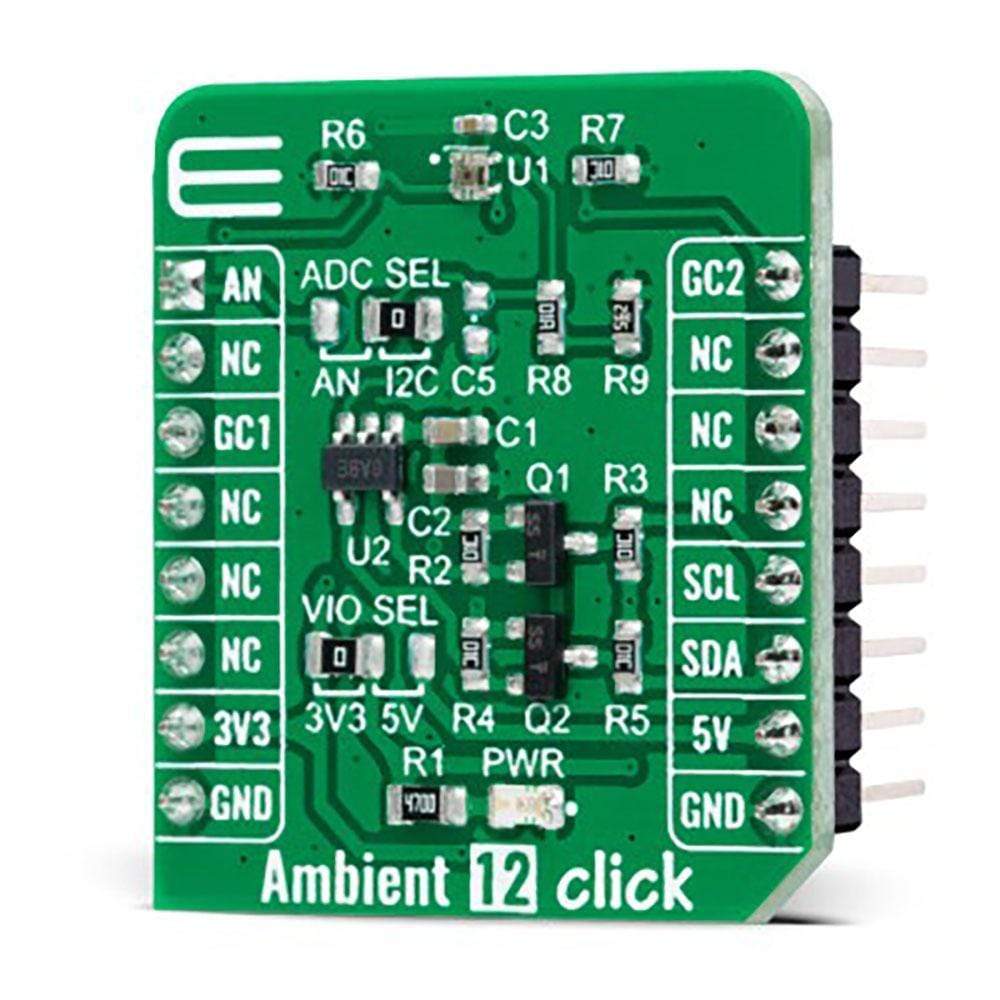
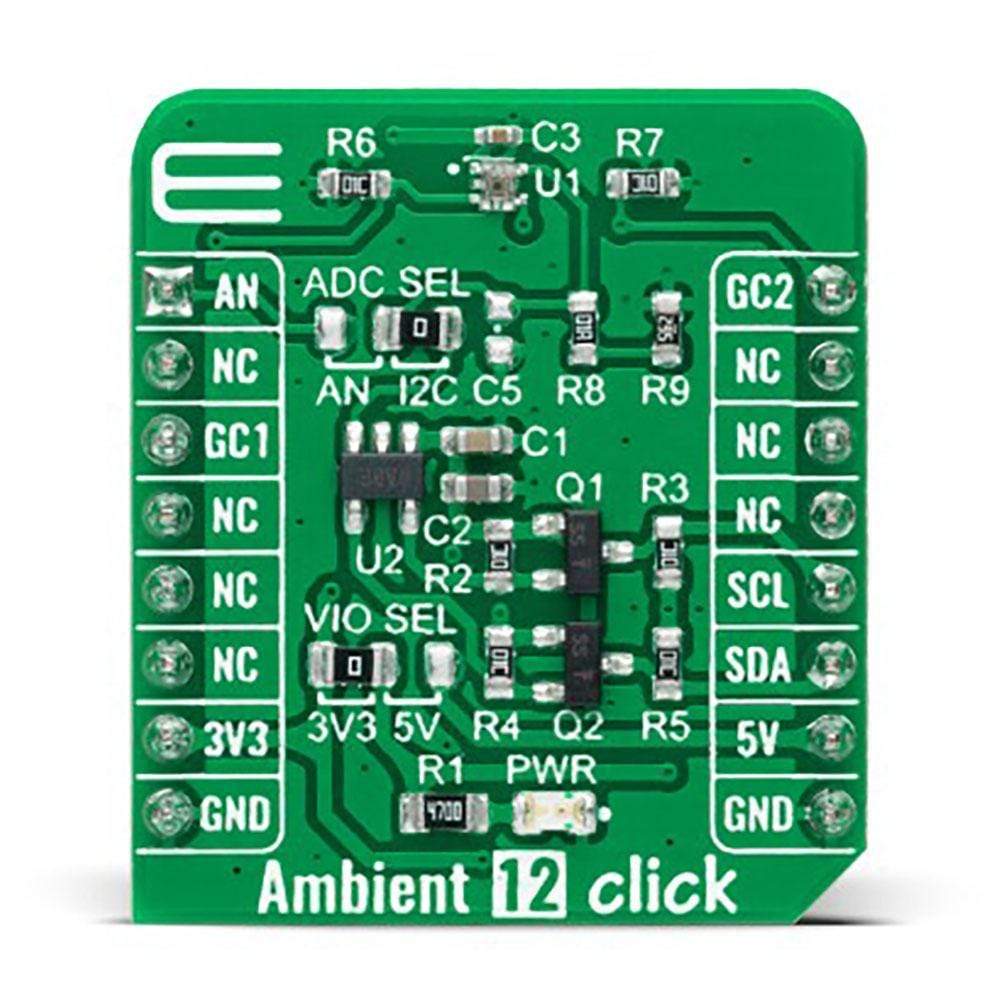
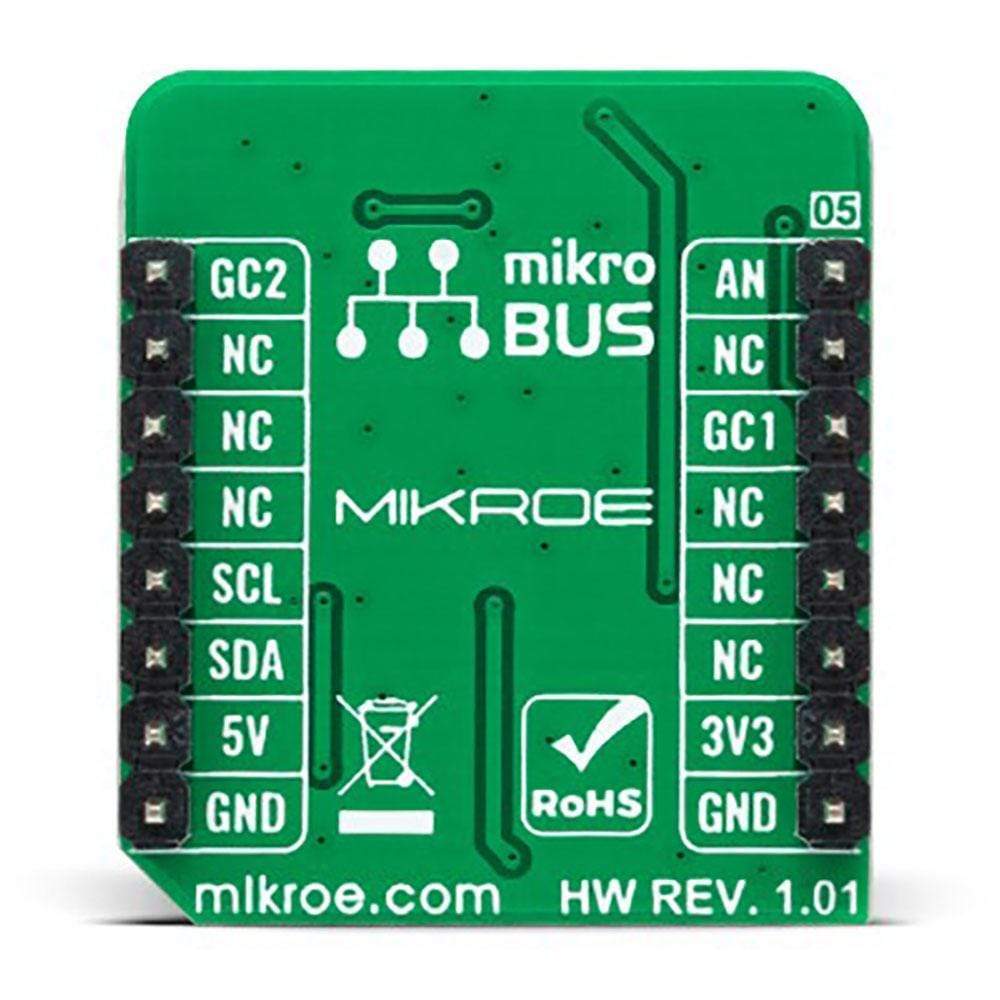
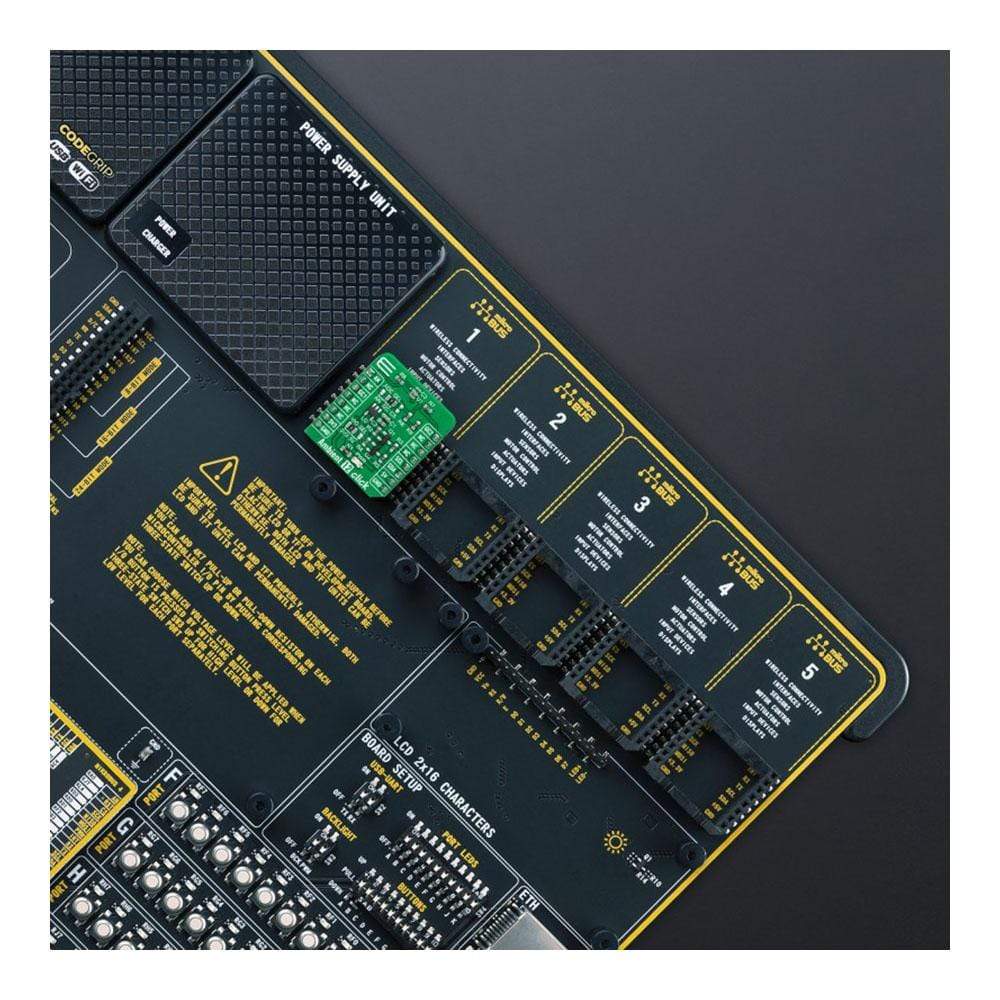
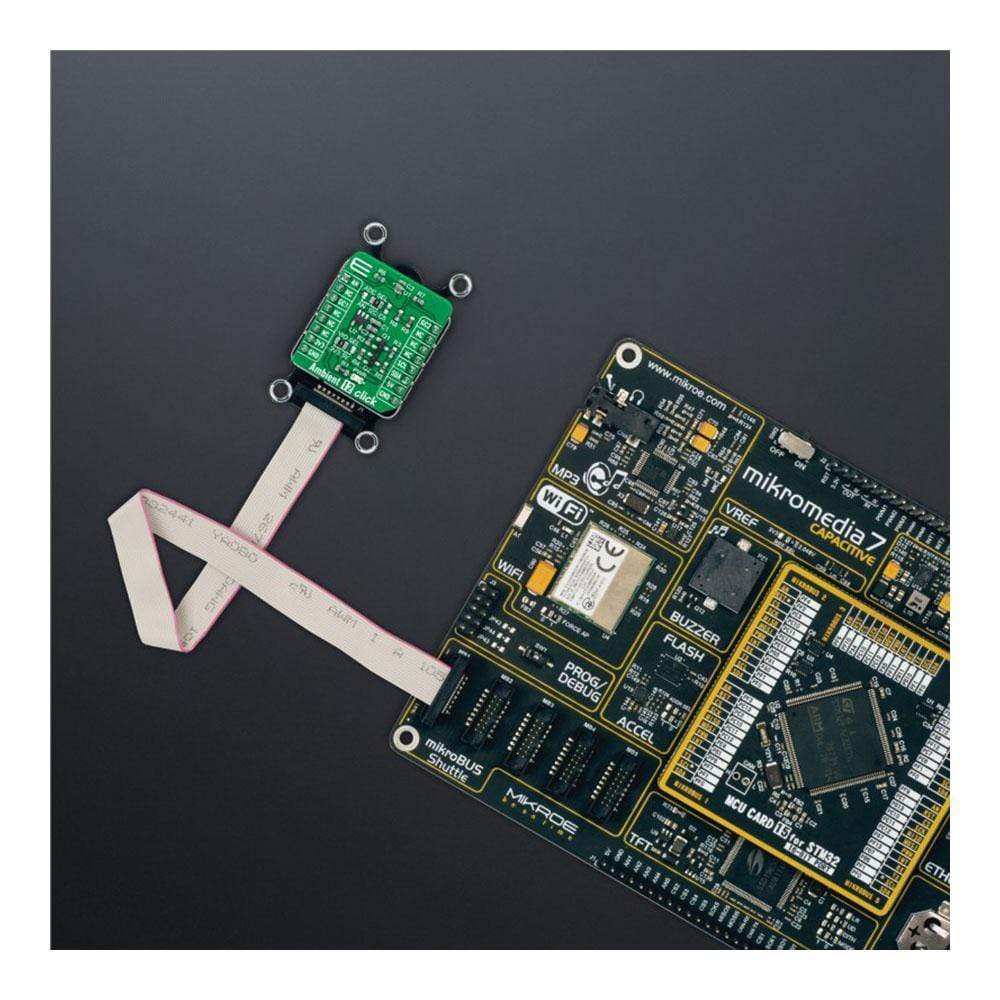
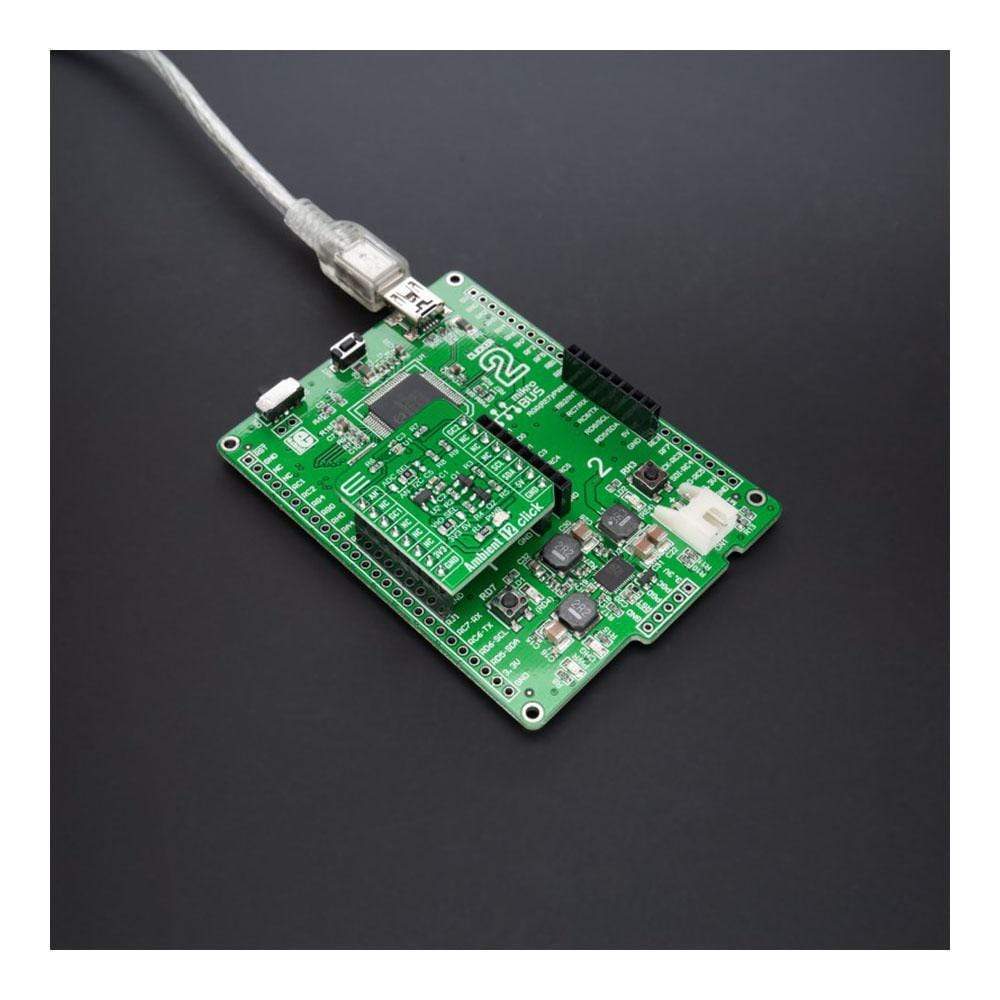
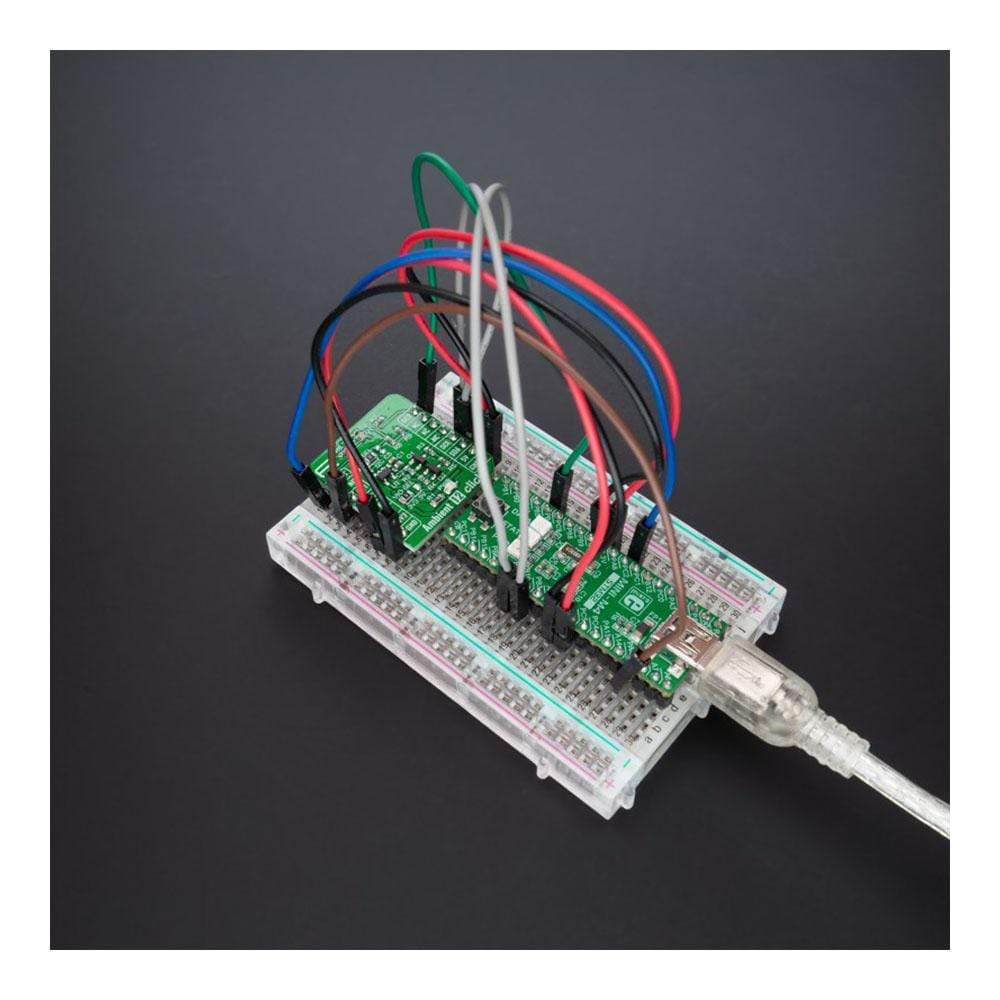
Overview
The Ambient 12 Click Board™ is a compact add-on board used to sense the amount of the present ambient light. This board features the BH1620FVC, an analogue current-output type ambient light sensor from Rohm Semiconductor. It is characterized by spectral sensitivity close to human eyes sensitivity and outputs current in proportion to brightness. It also has four configurable modes of operation, shutdown mode in association with three gain modes, and low sensitivity variations of +/-15%. This Click Board™ is the most suitable for obtaining ambient light data for adjusting brightness in applications that require power saving and better visibility.
The Ambient 12 Click Board™ is supported by a mikroSDK compliant library, which includes functions that simplify software development. This Click Board™ comes as a fully tested product, ready to be used on a system equipped with the mikroBUS™ socket.
Downloads
Le L'Ambient 12 Click Board™ est une carte complémentaire compacte utilisée pour détecter la quantité de lumière ambiante présente. Cette carte est équipée du BH1620FVC, un capteur de lumière ambiante de type sortie de courant analogique de Rohm Semiconductor. Il est caractérisé par une sensibilité spectrale proche de la sensibilité de l'œil humain et produit un courant proportionnel à la luminosité. Il dispose également de quatre modes de fonctionnement configurables, d'un mode d'arrêt associé à trois modes de gain et de faibles variations de sensibilité de +/-15 %. Ce Click Board™ est le plus adapté pour obtenir des données de lumière ambiante afin de régler la luminosité dans les applications qui nécessitent des économies d'énergie et une meilleure visibilité.
Le Tableau à clic Ambient 12™ est pris en charge par une bibliothèque compatible mikroSDK, qui comprend des fonctions qui simplifient le développement logiciel. Cette Click Board™ est un produit entièrement testé, prêt à être utilisé sur un système équipé du socket mikroBUS™.
| General Information | |
|---|---|
Part Number (SKU) |
MIKROE-4781
|
Manufacturer |
|
| Physical and Mechanical | |
Weight |
0.02 kg
|
| Other | |
Country of Origin |
|
HS Code Customs Tariff code
|
|
EAN |
8606027383519
|
Warranty |
|
Frequently Asked Questions
Have a Question?
Be the first to ask a question about this.







